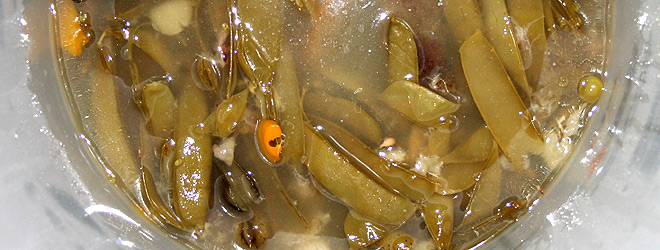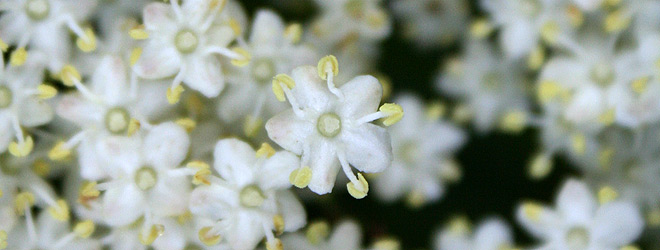I have read in several places that a good pea pod wine tastes like Riesling. This is quite clearly NONSENSE. And potentially damaging to the homemade wine industry. It’s no wonder the 1970s home brew boom fizzled out as adventurous winemakers moved from fruit to pod, only to be disappointed that their hard work and patience wasn’t rewarded with a crisp, German white.
Pea pod wine tastes like pea pod wine. Some folk like it, many more don’t. I have my doubts so have never attempted it… until now.
Another problem with pea pod wine is the need to get 5lbs of freshly picked pods. Even by freezing as I shell, my cumulative output is still shy of the desired weight. Fortunately, any legume pods can make a wine. We’ve grown broad beans and they have heavy pods, so in they go. I’m also chucking in a handful of tougher, less appetising peas from the final harvest and will make the weight with a few bits of unappealing fruit lying around the house: some tired looking grapes and a manky banana. Their sweet sugars should lend the wine a slightly more rounded flavour without taking away the overall essence of pod.
Our pods and sods wine recipe
Loosely chop 5lb of pea and bean pods, topping up with a handful of soft ripe or dried fruit (grapes, bananas, peaches, sultanas, dates etc) and boil in up to 8 pints of water (depending on pan size) until tender. Meanwhile put 3lb of sugar into a sterilised fermenting bin or bucket with the juice and rind of 2 unwaxed lemons and 2 oranges (no pith). Strain the boiled mess and pour over the sugar, adding any of the remaining 8 pints of boiled water. Throw in a cup of tea (no milk) and allow to cool.
When still warm, stir in a sachet of wine yeast. You can also add a teaspoon of yeast nutrient to help the yeast’s survival.
Cover and leave for four to eight days of vigorous fermentation before decanting into a demijohn -straining again in case any pulpy muck is till hanging around. Rack the wine when bubbling has ceased and bottle when clear and you’re certain no more fermentation will take place. Store in a cupboard for a minimum of six months before sampling.
Note: The first observation is that it starts off smelling really bad. But when the yeast gets to work a strangely alluring aroma takes hold…








Why is there a scary lizard eye in the middle of that? 🙂
someone told the lizard to keep his eye out for a good homebrew wine!